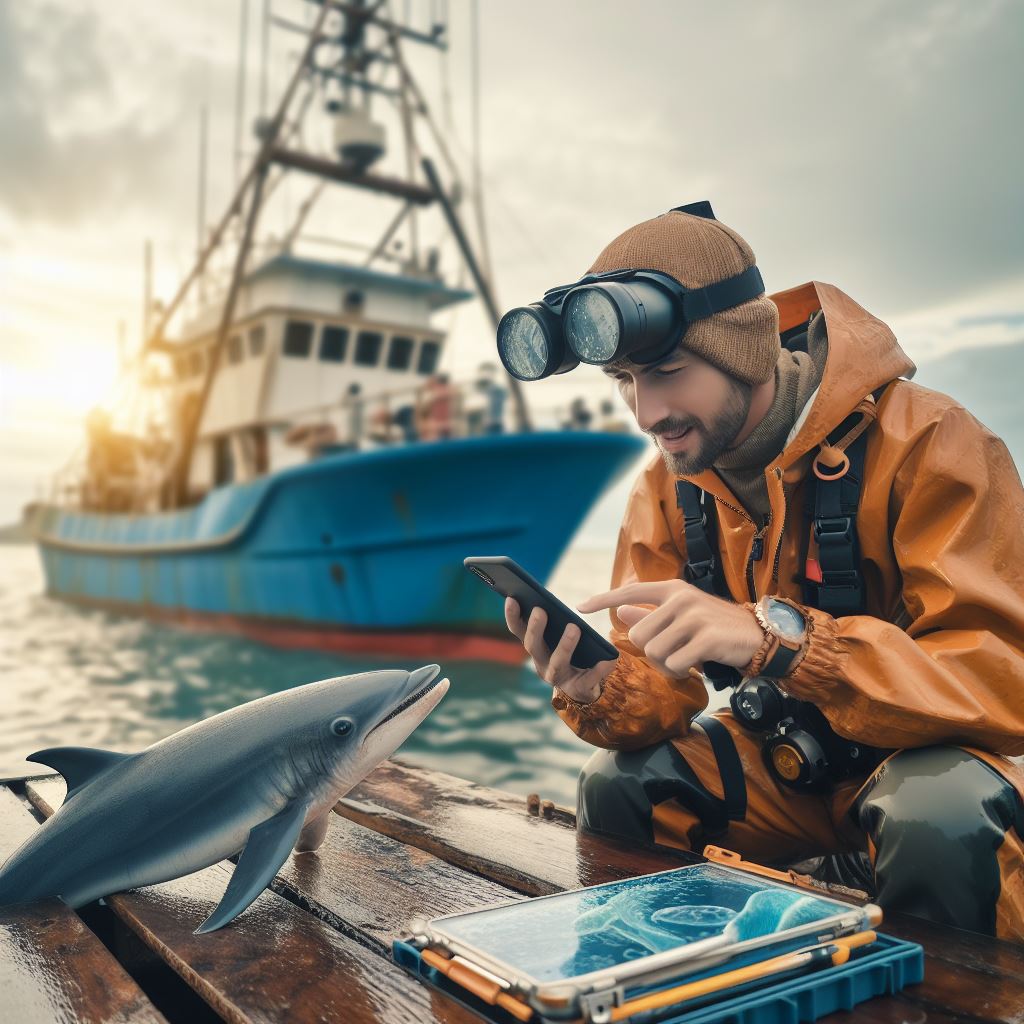Introduction
Understanding the intricacies of marine ecosystems is vital for maintaining ecological balance and safeguarding the biodiversity of our oceans.
Through marine research, scientists delve into the depths of the ocean, uncovering its mysteries and discovering the interconnectedness of marine life.
New Zealand, with its extensive coastline and diverse marine habitats, has long been recognized as a hub for groundbreaking marine research.
Its pristine waters provide a natural laboratory for scientists to study various marine species, ecosystems, and environmental phenomena.
Researchers actively explore New Zealand’s diverse marine ecosystems, from rugged shores to subtropical waters.
In this blog post, we embark on a journey to explore some of the most significant breakthroughs in marine research that have emerged from New Zealand.
Exploring marine biology’s forefront, we’ll highlight New Zealand’s advancements in ocean monitoring and conservation.
Highlighting breakthroughs, we showcase New Zealand’s scientists’ invaluable contributions, emphasizing ocean protection and sustainable management urgency.
So, let’s dive in and discover the remarkable world of marine research in New Zealand.
Breakthrough 1: Exploration of the Deep Sea
A. Significance of deep-sea exploration
Deep-sea exploration is vital as it helps us gain a better understanding of marine ecosystems and their immense biodiversity.
It also allows us to study unique species and their adaptations to extreme environments.
B. Notable New Zealand expeditions and discoveries
- The Kermadec Trench Expedition (2014): Led by researchers from NIWA, this expedition explored the Kermadec Trench, one of the deepest parts of the Pacific Ocean.
It revealed amazing discoveries, including new species and geological features. - The Antarctic Marine Living Resources (AMLR) Program: New Zealand researchers have been deeply involved in studying the marine ecosystem around Antarctica.
They have discovered new species, investigated food webs, and developed sustainable management strategies for fisheries.
C. Examples of technologies and methods used in deep-sea exploration
- Remotely Operated Vehicles (ROVs): These unmanned submarines equipped with cameras and sampling devices allow scientists to explore the depths and collect samples with precision.
- Autonomous Underwater Vehicles (AUVs): These battery-powered robots are used to map the seafloor, collect data, and even sample water and sediment. They can operate independently for long periods.
- Sonar technology: Scientists use sonar to create detailed maps of the ocean floor and detect underwater features like canyons, ridges, and hydrothermal vents.
D. Implications of deep-sea research for marine conservation and industry
- Conservation: Deep-sea research helps identify vulnerable ecosystems and species, allowing for better conservation efforts.
It also supports the establishment of Marine Protected Areas (MPAs) for long-term preservation. - Climate change impact assessment: By studying deep-sea ecosystems, scientists can assess the impacts of climate change on the ocean and its role in carbon storage and sequestration.
- Potential for bioprospecting: Deep-sea exploration can lead to the discovery of new bioactive compounds with pharmaceutical and biotechnological applications, benefiting various industries.
- Sustainable resource management: Understanding deep-sea habitats helps in managing fisheries sustainably, avoiding overexploitation of commercially valuable species and minimizing environmental impact.
In essence, the exploration of the deep sea plays a crucial role in expanding our knowledge of marine ecosystems and their conservation.
Notable New Zealand expeditions, such as those in the Kermadec Trench and around Antarctica, have led to significant discoveries.
Technologies like ROVs, AUVs, and sonar continue to advance deep-sea exploration.
The implications of this research reach beyond conservation, also benefiting industries and climate change assessments.
Personalized Career Consulting
Unlock your potential with expert career advice tailored to your goals. Get personalized guidance and actionable steps toward your dream career in New Zealand.
Get StartedContinuing to explore the deep sea reveals Earth’s interconnectedness, urging protection for fragile ecosystems.
Read: Marine Biology Degrees in NZ Explained
Breakthrough 2: Identification of Marine Biodiversity Hotspots
A. Overview of the concept of biodiversity hotspots
Marine biodiversity hotspots, also known as areas of high species richness and endemism, are crucial in understanding the distribution and conservation of marine life.
These hotspots are defined as regions that support an exceptional diversity of species, including many that are found nowhere else on Earth.
B. New Zealand’s unique biodiversity and ecosystem challenges
New Zealand is renowned for its unique biodiversity, with a high proportion of species found nowhere else in the world.
However, it also faces numerous challenges in preserving its ecosystems.
The country’s marine environment is particularly vulnerable due to various factors including overfishing, pollution, and habitat degradation.
C. Specific research projects and methods used to identify hotspots
Researchers in New Zealand have undertaken various projects to identify and map marine biodiversity hotspots.
One notable study focused on coral reefs, using advanced technology such as underwater cameras and DNA analysis to survey and classify different species.
By analyzing these data, scientists were able to identify regions with the highest levels of biodiversity.
In another research project, scientists conducted extensive surveys of marine organisms using underwater drones equipped with various sensors.
These drones collected data on species abundance, distribution, and genetic diversity.
By analyzing the collected data, researchers were able to pinpoint areas with high levels of biodiversity and identify key factors contributing to their formation.
D. Implications for habitat protection and conservation efforts
The identification of marine biodiversity hotspots has significant implications for habitat protection and conservation efforts in New Zealand.
Transform Your Career with a Professional CV and Cover Letter
Stand out to employers with an ATS-optimized resume and tailored cover letter designed to match your dream role. Let us craft your job application materials for success!
Get StartedBy pinpointing these areas, policymakers and conservationists can prioritize conservation initiatives and implement targeted management strategies to safeguard vulnerable ecosystems.
The data obtained through the research projects highlight the urgent need for increased protection of marine habitats in these hotspots.
To preserve ecosystems, we can cut pollution, control fishing, create marine sanctuaries, and manage sustainably.
Furthermore, the identification of hotspots allows for a better understanding of the complex interactions between species and their habitats.
This knowledge can inform the development of effective conservation strategies that consider the interconnectedness of different marine ecosystems and the potential cascading effects of biodiversity loss.
In fact, the breakthrough in identifying marine biodiversity hotspots in New Zealand provides valuable insight into the country’s unique ecosystems and the urgent need for their protection.
Through innovative research projects and advanced technologies, scientists have been able to identify areas of high species richness and endemism, paving the way for targeted conservation efforts.
By prioritizing the protection of these hotspots, New Zealand can ensure the preservation of its rich marine biodiversity for future generations.
Read: NZ Seas: Marine Biology Hotspots Unveiled

Breakthrough 3: Understanding Climate Change Impacts on Marine Environments
A. Relationship between climate change and marine ecosystems
Climate change has a direct impact on marine ecosystems, causing shifts in temperature, sea level rise, and changes in ocean currents.
These changes affect the distribution of species, disrupt food webs, and lead to increased acidity in the ocean.
Understanding this relationship is crucial for predicting and managing the effects of climate change on marine environments.
B. Overview of New Zealand’s vulnerability to climate change impacts
New Zealand, with its extensive coastline and dependence on marine resources, is highly vulnerable to climate change impacts.
Rising sea levels pose a threat to coastal communities, infrastructure, and cultural sites.
Boost Your Career with a Standout LinkedIn Profile
Attract recruiters and expand your network with a fully optimized LinkedIn profile tailored to highlight your strengths and professional goals. Let your profile open doors to new opportunities!
Get OptimizedChanges in ocean temperatures and currents can also impact vital fisheries and aquaculture industries in the country.
C. Research initiatives focusing on climate change effects
New Zealand has been at the forefront of marine research initiatives aimed at understanding climate change impacts.
Scientists are monitoring changes in ocean temperature, acidity levels, and biodiversity to evaluate the extent of these effects.
Research institutions collaborate with government agencies and international organizations to address the challenges of climate change on marine ecosystems.
D. Key findings and how they contribute to global climate change knowledge
Research conducted in New Zealand has yielded important findings regarding climate change impacts on marine environments.
Long-term studies have shown shifts in species distribution, decline in coral reefs, and altered breeding patterns of marine animals.
These findings contribute to global climate change knowledge, providing valuable insights for policymakers and conservation efforts worldwide.
Read: Day in a Life: Marine Biologist in NZ
Breakthrough 4: Development of Sustainable Fishing Practices
A. Importance of sustainable fishing for marine resources
Sustainable fishing practices play a crucial role in preserving the delicate balance of marine ecosystems.
It is essential to ensure that fishing activities do not exhaust or deplete fish populations and their habitats.
By practicing sustainable fishing, we can maintain healthy fish stocks and protect the overall health of our oceans.
B. New Zealand’s efforts in promoting sustainable fishing practices
New Zealand has long recognized the importance of sustainable fishing and has taken significant steps to promote responsible fishing practices.
The country has implemented strict regulations and policies to protect its marine resources and ensure their long-term sustainability.
C. Research projects aimed at minimizing bycatch and overfishing
Researchers in New Zealand have undertaken various projects to minimize the impact of bycatch and overfishing on our marine resources.
Bycatch refers to the unintended capture of non-target species, such as dolphins, turtles, and seabirds, during fishing operations.
Overfishing, on the other hand, occurs when fish populations are harvested at an unsustainable rate, leading to their depletion and potential collapse.
Scientists are developing innovative fishing gear and techniques that reduce the likelihood of bycatch.
This includes the use of devices that exclude non-target species from the fishing nets or modifying fishing methods to minimize their impact on the ecosystem.
Furthermore, research initiatives focus on understanding the dynamics of fish populations and their habitats, allowing for effective management.
By studying the abundance, migration patterns, and breeding habits of target species, scientists can make informed decisions about sustainable fishing practices.
D. Implications for the fishing industry and long-term resource management
The development of sustainable fishing practices has significant implications for the fishing industry and the long-term management of our marine resources.
Embracing sustainability not only ensures the conservation of fish stocks but also leads to economic benefits for the industry.
By adopting sustainable practices, fishermen can maintain a steady supply of fish, meeting the demands of consumers without jeopardizing the future availability of resources.
This secures the livelihoods of those employed in the fishing industry, fostering its sustainability as well.
Moreover, sustainable fishing practices contribute to the overall health of marine ecosystems.
By minimizing the impact of fishing activities on non-target species and their habitats, we can preserve biodiversity and protect the delicate balance upon which countless other marine organisms rely.
Long-term resource management is crucial to safeguarding the future of our oceans.
Research breakthroughs in sustainable fishing practices provide valuable knowledge and tools that allow policymakers and fisheries managers to make informed decisions.
These decisions ensure the sustainability of our marine resources for future generations.
In general, New Zealand’s focus on sustainable fishing practices highlights its commitment to preserving its marine resources.
Through research projects targeting bycatch and overfishing, the country is at the forefront of developing innovative solutions to minimize the ecological impact of fishing activities.
Embracing sustainability not only benefits the fishing industry but also ensures the long-term health and vitality of our oceans.
Read: NZ Marine Biologists: Who Are They Really?
Conclusion
New Zealand’s marine research unveils mysteries, like the discovery of new species.
Researchers reveal the secrets of marine ecosystems, highlighting biodiversity’s importance.
Studies show the impact of climate change on marine life, urging immediate action.
Innovative technologies aid in tracking marine animals, enhancing conservation efforts.
Research is pivotal in safeguarding marine environments, guiding sustainable management.
Scientific findings inform policies, ensuring effective conservation strategies for future generations.
Collaborative efforts between scientists, policymakers, and communities foster marine stewardship.
New Zealand’s marine research is integral to global conservation endeavors.
The country’s contributions enrich our understanding of marine ecosystems worldwide.
As stewards of the oceans, New Zealand sets an example for responsible marine stewardship.
The significance of New Zealand’s marine research cannot be overstated.
Through ongoing dedication, New Zealand continues to lead in marine science innovation.




